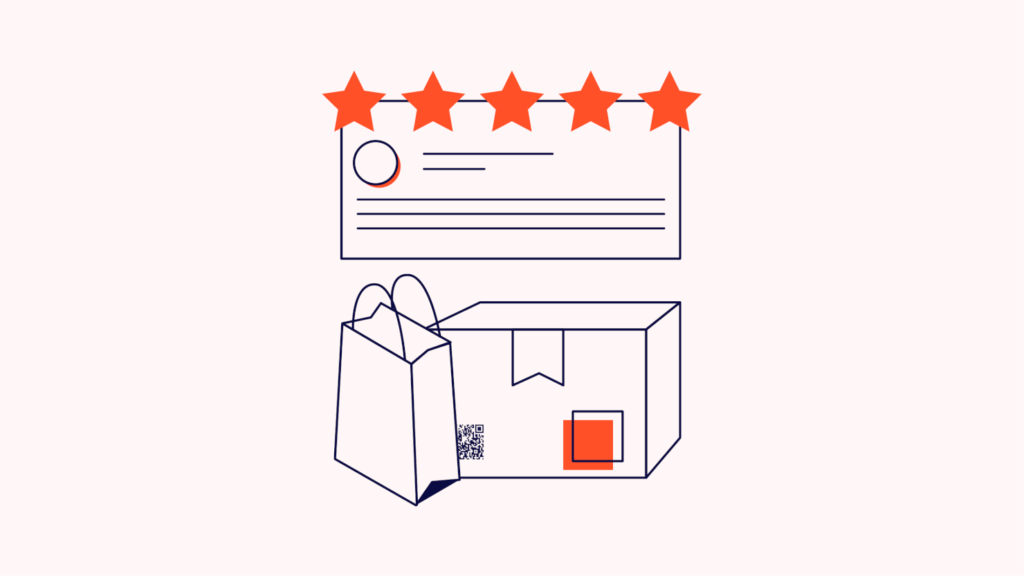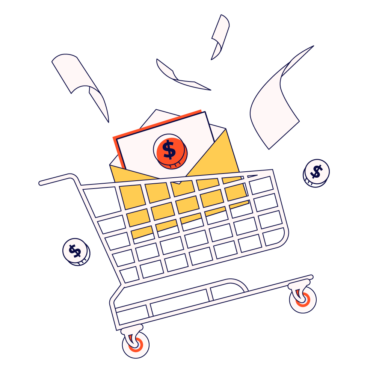Delivery Delight: Ensuring customer satisfaction through efficient order fulfillment is crucial. A significant 67% of customers are unwilling to return after a poor delivery experience, highlighting its impact on customer loyalty.
Return Ruckus: Inadequate fulfillment processes can lead to an uptick in returns and complaints. This not only frustrates customers but also incurs additional costs and time for the business, impacting the bottom line.
Supply Chain Symphony: Order fulfillment plays a vital role across the entire supply chain of a company. Its efficiency and success are fundamental in maintaining a harmonious and productive supply chain system.
Order fulfillment is critical to your company’s success, and it will touch nearly every part of your supply chain. Almost 67% of customers who have a bad experience with delivery say they will not go back to that retailer again. Poor fulfillment not only upsets your customers, but it’s also likely to result in increased returns and complaints that cost your business time and money.
Having a reliable global order fulfillment strategy in place is the foundation of a successful company, allowing you to retain existing customers as well as gain new ones. In this guide, I break down the perfect order fulfillment process. I also explore best practices and the different order fulfillment and order management models available for your business.
What Is Order Fulfillment?
The order fulfillment process covers everything from receiving an order when you make a sale through to the order landing in the customer’s hands.
Some companies have the order management and fulfillment process in-house while some companies choose to outsource the order fulfillment process to an external order fulfillment company, fulfillment partner, or third-party logistics provider, which will handle the storage, packing, and delivery of orders on their behalf.
With the right order fulfillment option, all the orders will be delivered efficiently, cost-effectively, and with minimal mistakes. While it is important to have shipping that is fast and good value, it is also important to make sure the right products are getting to the right place.
Why Is Order Fulfillment Important?
Order fulfillment is one of the most important aspects of your business. Thanks to companies like Amazon offering free next-day delivery and a seamless returns process, customers now expect order fulfillment to be quick, reliable, and pain-free.
If your order fulfillment doesn’t meet customer expectations, your customers won’t shop with you again and could even leave you negative feedback, turning away potential new shoppers.
When you’re first starting out and only receiving a few orders a day, you may be able to keep track of all your orders and arrange order delivery to customers yourself. However, as the business grows, it’s essential to have reliable order fulfillment processes in place to reduce the risk of human error.
Order fulfillment goes hand in hand with inventory management (how you keep track of your inventory). If your order fulfillment isn’t up to scratch, this is going to make it more difficult to keep track of your inventory. Likewise, if you’re not on top of your inventory management, then it’s going to make fulfilling orders more difficult.
For example, customers might be disappointed if your products aren’t in stock, but they will be even more annoyed if you say there is stock available, only for them to be disappointed later on when you have to message them to say you can’t fulfill their order.
If you have a great order fulfillment process in place, it won’t just be your customers who benefit.
Your business will also benefit from:
- Better inventory management: It will make it easier for your inventory management process to work effectively because you’ll know what stock has been sold and returned. This will help prevent underselling and overselling. A streamlined inventory management system will help you to identify and remove slow-selling stock and even automatically send a purchase order to a supplier when inventory levels are low.
- Reduced operational costs: Reducing fulfillment errors and refunds save you money and time so you can focus on processing more orders.
- Better customer satisfaction: A better customer experience results in better feedback for your company and more customers placing multiple orders as a result.
- Better shipping: Working with a good shipping company will help you keep your delivery costs down and reach more customers.
How The Order Fulfillment Process Works
The order fulfillment process begins when a new order is placed by a customer. This order needs to be tracked throughout the whole process so that it’s possible to see where the order is at all times and when it finally arrives in the hands of the buyer.
Fulfillment involves picking the ordered product from the warehouse where it is being stored, putting it in the correct packaging, adding the required postage information, and finally delivering it to the customer.
Throughout the order fulfillment process, customers need to be kept up to date as to where their order is. This includes sending the customer a notification that their order has been received when it’s been dispatched to the customer, and when they can expect to receive it.
The order fulfillment process may sound straightforward, but there are several potential ways the process can fall, so it’s worth looking at the stages in greater detail.
1. Receiving a new order
Receiving an online order kicks off the order fulfillment process. How a new order is registered will depend on the company. For example, if you are fulfilling orders in-house, then a new order will trigger your internal fulfillment process. However, if you’re using an external logistics provider, then their order processing system will need to notify the warehouse about the incoming order.
2. Storage & inventory management
Your products need to be stored somewhere ready to be picked and packed to be sent out to a customer. This could be done in-house if you have your own warehouse, or you could store your products with an external logistics provider, also known as a third-party logistics provider (3PL).
It is important that your enterprise inventory management software and order fulfillment system are connected so that stock levels can be updated in real-time. This will ensure you are never overstocked or giving customers false information about your stock levels.
3. Picking and packing
Once an order is placed, the next step in ecommerce order fulfillment is picking and packing of the product ready to be sent to the customer. This means that your internal shipping team or 3PL company will pick up the product from storage and package it up so that it’s delivered safely to the customer.
This is an area where human error can easily happen, particularly when you stock a wide range of products. A paperless picking solution, like a digital scanning system to scan product barcodes, can be a useful way to prevent the wrong product from being picked up. 3PLs are likely to have a system like this in place, which will help reduce potential errors.
4. Shipping products
When the product has been packaged, then it’s ready to ship. Either your internal shipping team or the 3PL will need to add the correct shipping label to ensure the product gets to the right destination in good time. The product will then be passed to the shipping carrier, which will get the product to the customer.
It’s vital that you choose a reputable and professional shipping method to get the product to the customer quickly and without any damage to the product. There are lots of different options out there, so you’ll want to do your research to see which shipping companies can offer the best service for the lowest shipping cost.
You may find that you need to work with more than one delivery company, for example, if you want to offer a range of delivery options such as international delivery or same-day delivery.
5. Returns & customer service
The process doesn’t end when the customer receives the product. The customer may want to return or exchange the product, so you need to make sure you have an easy-to-follow returns policy.
Returns aren’t just about the customer returning their products. It's also about creating brand loyalty. 92% of customers say they are more likely to buy again from an online store if the returns process is easy.
Customers should know exactly how to return or exchange an item and when they can expect a refund. It should be clear whether you offer free postage for returns and, if so, what steps customers need to follow. You also need a process for receiving returns and updating your inventory management system so that returns are accounted for, the damaged stock is set aside, and customers receive refunds when they expect.
If you don’t have a simple, reliable returns process, you are likely to upset your customers and will not get repeat orders as a result. Similarly, customers expect responsive and helpful customer service should they have any questions or issues. This means that your company needs to have a reliable system for tracking orders and responding to customer questions promptly.
Order Fulfillment Models
There are a range of different fulfillment models out there that will suit companies of varying sizes:
Self-fulfillment
New or very small businesses can often get by with merchant fulfillment. If your company does not yet have positive cash flow and is only just beginning to bring in orders, save your money and do it yourself until you have stable cash flow. Typically, you will simply integrate an order management system with your ecommerce website and warehouse management solution and manage all the logistics yourself from there.
While fulfilling a customer order yourself can save you money, it can also be time-consuming and difficult to scale, leaving little time for other aspects of the business, like product development.
That’s why as businesses grow and the order volume increases, they often look to outsource fulfillment to a 3PL or fulfillment center. These can take the stress out of order fulfillment and leave you to concentrate on important tasks such as product development, marketing, and generally growing the business.
Third-party fulfillment (3PL)
Third-party logistics providers (3PLs) are experts at managing fulfillment and returns and can be a lot cheaper than setting up your own warehouse.
Each 3PL has a particular receiving process that they use for incoming inventory. They organize it and have it ready for fulfillment by storing it on-site rather than at the seller’s site. They also often have warehouses in strategic locations, such as near ports, saving you on freight costs.
Outsourcing order fulfillment is ideal for growing businesses as they allow you to share the cost of a warehouse, warehouse management system, and staffing. This helps keep costs down and means you can stay flexible so that if you have a slow season, you’re not left paying for an empty warehouse.
A 3PL will usually manage the entire end-to-end fulfillment process for you. As I am based in the UK, but a lot of my sales are in the U.S., I use one 3PL in California and one in Texas. They have saved me from a huge amount of stress, as I can place larger orders to stay in stock more often. It also saves money as my orders with suppliers in Asia become cheaper when I place larger orders.
A third-party fulfillment center will often have the fulfillment infrastructure already in place and can also feed into your order fulfillment software and inventory management software to keep your customers up to date with their orders and keep your inventory levels accurate.
Hybrid fulfillment
If you have different types of stock or stock that sell in different geographies or fulfillment locations, sometimes it makes sense to have a mix of in-house and 3PLs.
For example, if you are a large homeware brand, you might fulfill orders of small items such as candles yourself through an internal shipping team. However, if you also stock beds and chairs, a 3PL probably makes more sense.
A hybrid order fulfillment solution also works for companies based in the UK who sell in the U.S., as it makes your order fulfillment operation easier if you have stock in two locations.
The key to having a successful hybrid solution is to ensure you have great order fulfillment systems and software in place to keep your inventory management reporting accurate.
Dropshipping
Dropshipping is when an order is dispatched directly from the manufacturer after you take payment from the customer. Previously, using ecommerce platforms for dropshipping has often meant selling products directly from Alibaba manufacturers in China, and the model has gained a negative reputation for being untrustworthy and unreliable.
However, in recent years, dropshipping solutions have become a more recognized way of fulfilling orders, and you now find a lot of reputable brands using this model. The benefit of this model is that it frees you up to focus entirely on growing the business and marketing the products without having to worry about storage or fulfillment. However, your profit margins can be a lot lower, and you have a lot less control over the business.
Marketplace fulfillment
Some marketplaces, such as Walmart (Walmart Fulfillment Services) and Amazon (Amazon FBA), have their own in-house fulfillment service. This service is a hybrid between third-party fulfillment and dropshipping, as you send your products to the warehouse, and the marketplace platform takes the payment from the customer and takes a fee from you for the shipping, handling, and warehousing.
This is a great model to use to reach more customers, but the fulfillment fees can be higher than a 3PL or in-house fulfillment. Many new businesses use these models when they are starting, as they can be a great way to grow quickly without having to worry about creating order fulfillment processes yourself.
What’s Your Order Fulfillment Process?
Whether you are new to the ecommerce community or have been processing orders for years, it’s always important to stay on top of your order fulfillment to make sure your customers are happy. Most ecommerce businesses will use a combination of the different models covered in the article and move between different models as they grow.
Whichever model you choose, it’s important to remember that efficient order fulfillment is an essential part of the customer relationship. A good customer relationship leads to a happy customer base and more sales.
For more tips and strategies for your ecommerce business, subscribe to The Ecomm Manager newsletter today!
Related Read:
- Best Order Management Software
- What Is An Order Management System?
- Lean Inventory: Highly Functional Warehouses Propel Businesses To Success In Ecommerce
- What Is 3PL (Third-Party Logistics): Definition & Top Companies to Use For Your Business
Related Lists of Tools:
Also Worth Checking Out: Order Tracking Software for Online Stores


